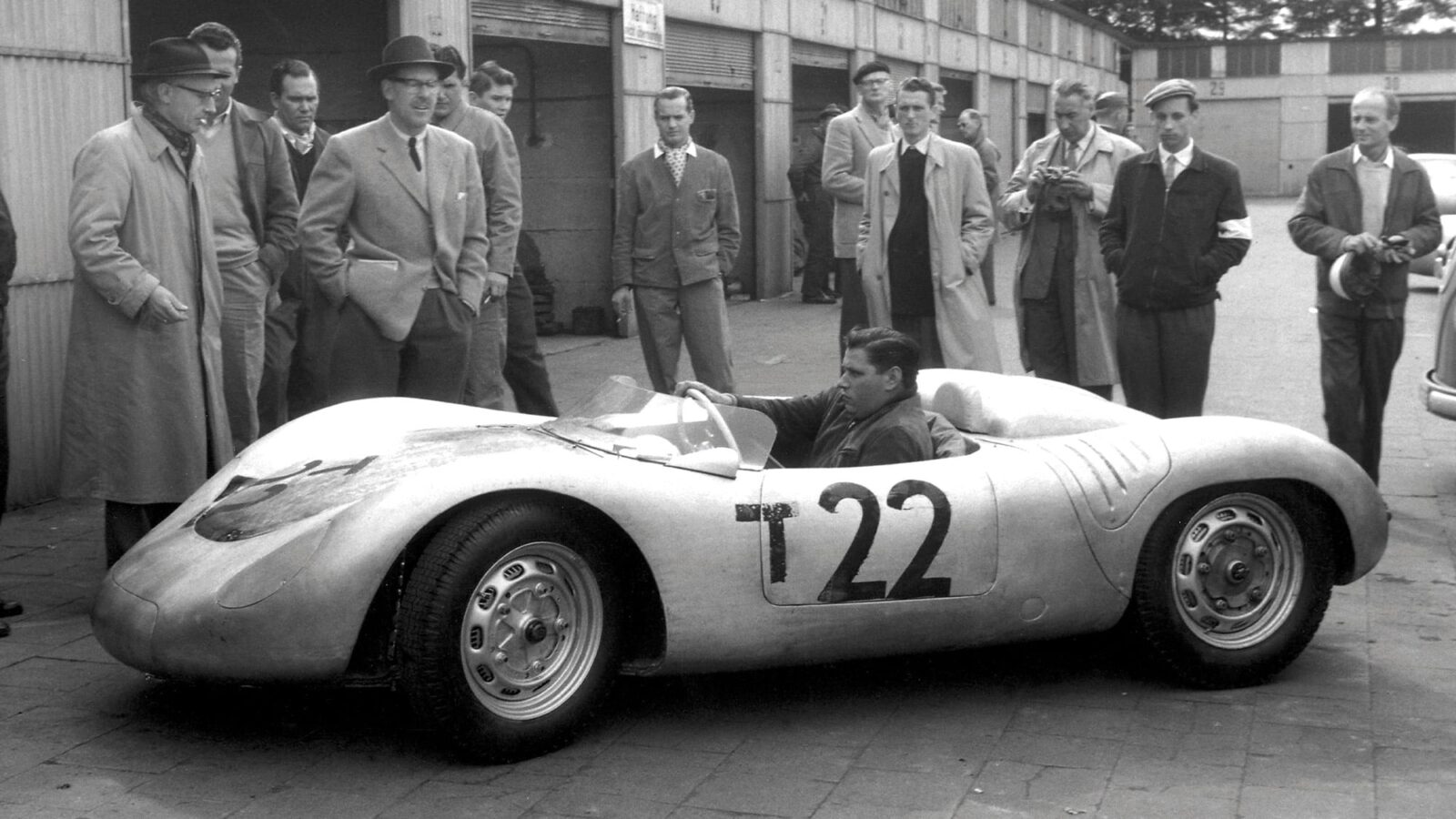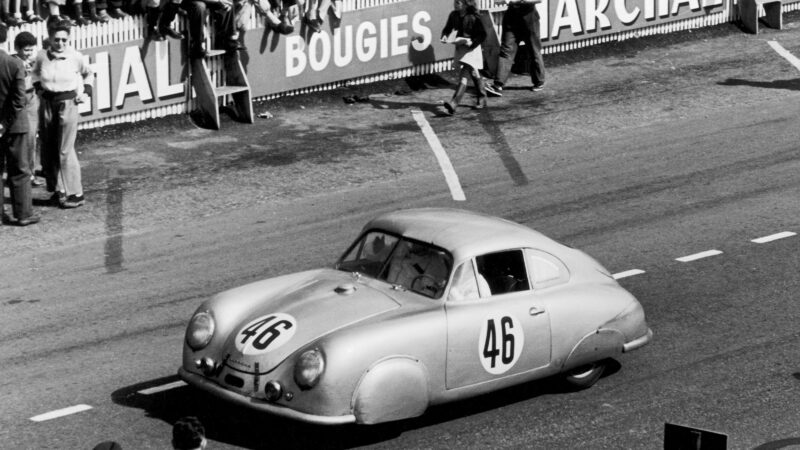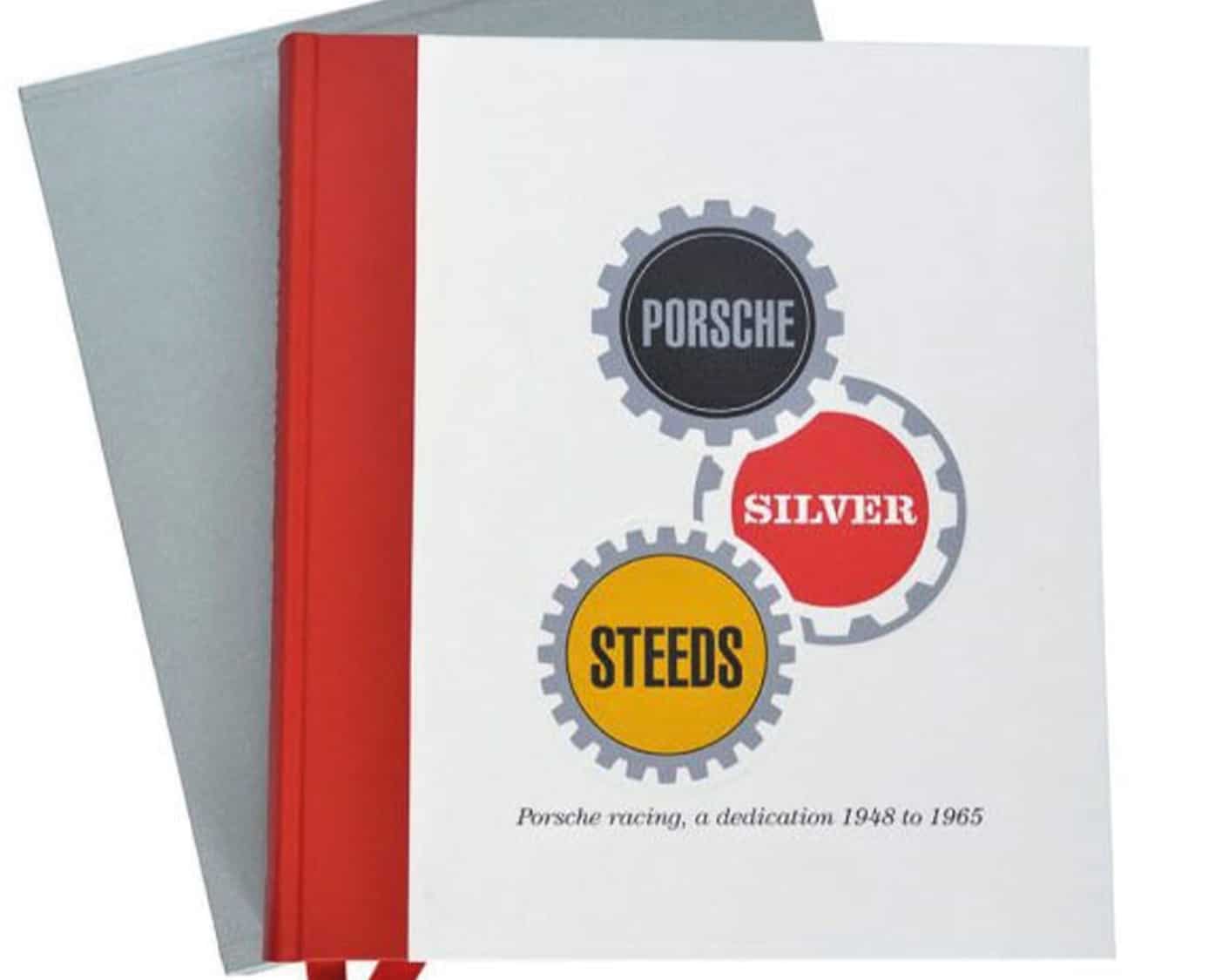Porsche Silver Steeds book review
Porsche’s racing history isn’t all 911s and 962s. Now a new book, Porsche Silver Steeds tells the formative story, says Gordon Cruickshank

The 718 RSK Spyder was a star of the sports car scene from 1957-1962, and even formed the base of the Formula 1 car of 1961
A vast book on Porsche competition and not a single mention of the 911 or 956/62? Huge and weighty though it is, this book starts with 1948 and cuts off in 1965, firmly ignoring the arrival of the 911 which was about to launch the Stuttgart firm into serious sales and an ensuing tidal wave of race and rally successes.
Instead this is purely about racing efforts during the first period of the firm’s competition entries – the 356 Carreras, 550 and 718 RS spyders, the svelte 904 and the F2 and F1 single-seaters. Despite all the previous books on the marque, Smith reckons this is the first assemblage of all the early racers and every event, though he gets over-romantic by making a comparison with Teutonic knights in their silver armour, hence the title Silver Steeds. But he “hopes all fans of Porsche might find an ‘I didn’t know that’ moment within these pages”. I did – one aside notes that Porsche’s Herbert Linge created a Mille Miglia road book in 1954, which DSJ borrowed before compiling his rollermap for 1955.
Early chapters ground us with Ferdinand Porsche’s many early innovations – his petrol-electric hub-drive Löhner vehicle and the highly successful Austro-Daimler Sascha racing cars and his time dodging between the various German car firms before starting his eponymous company in 1931.
“We never worried if a customer car beat our works cars. It showed we sold front-line race cars”
While he took on any design project offered, including an NSU scheme which would gradually become Hitler’s KDF Wagen, the Volkswagen, it’s clear that a love of racing ruled from the beginning. Yet even while developing the no-limits Auto Unions he was scheming a lightweight aerodynamic sports car. Replete with drawings, Porsche Silver Steeds shows us 1938 blueprints of a design with a typically Porsche coupé body whose motive power is a compact V10 of a minimal 1.5 litres, mid-mounted.
By now fully committed to the ‘peoples’ car’, he was not allowed to divert resources: “a sports car is not a car for the people”, Smith quotes. But industry is frequently steered by politics; suddenly the propaganda value of a race from one fascist state to another, Berlin to Rome, became high priority. Porsche’s sports car scheme suddenly had support and pragmatically he inserted that tail-hung flat-four under his jelly-mould body shape to create three Type 64 machines, looking like saucer-eyed sea creatures. The 1939 Berlin-Rome race would never happen but the direction was settled. While 356 No1 had its engine in the middle, engineering pragmatism, utilising easily available VW parts, gave us the classic sting-in-the-tail motor placement that scared in principle but excelled in practice. In explaining all this Smith calls on an immensely wide range of photographs and drawings, so these developments become very clear. (Not so some captions: white text on silver doesn’t make for legibility…)

The lightweight 356, Porsche’s first Le Mans class winner in 1951, complete with wheel spats
If you’ve ever been a little confused about the overlap between the factory Porsche developments and the connected machines of Walter Glöckler, Smith is the man to explain how the private company could go racing with mid-engined Porsche power when the main company, short of work, had to repair American Jeeps instead. In Smith’s view, it might almost be said that Walter Glöckler was actually the father of the Porsche racing cars during the years that followed.
Suitably, the first race for a Porsche was the 1951 Le Mans 24 Hours, where prophetically the 356 won its class. Entered not by the works team but by a French dealer it resulted in a flood of sales enquiries, setting a pattern of profitable privateer racing. A crucial quote from Norbert Singer: “We never really worried if a customer car beat our works cars. It proved that we supplied our customers with genuine front-line race cars. This gave us great customer credibility so we sold more cars”.
I mustn’t get distracted into telling the whole story – that’s Smith’s job which he does with evident gusto in his fifth Porsche book. But take it in small doses – there’s such an avalanche of facts, chassis numbers for every race entry, and model types as cylinders, camshafts and capacity all increase into the 1960s that it’s a bit overwhelming; tempting instead to follow the story through the extensive illustrations, mostly from the Porsche archives, which accompany every race entry and summary. Early factory scenes, atmospheric colour shots from Carrera Panamericana and Pikes Peak, 904 body moulds in production, F1 cars wallowing in a muddy Hockenheim paddock, all get generous space to breathe in a typically top-line Palawan production offered in slipcase in several levels of luxury.
It’s beautiful, but if you want it you need to act quickly. A recent twist in this market is EasyJet-style scarcity pricing which here rises from early bird £500 to a staggering £2500 for the last run of the poshest limited edition. It seems that like supercars, superbooks have an insatiable customer base.

|
Porsche Silver Steeds Roy Smith Palawan |
